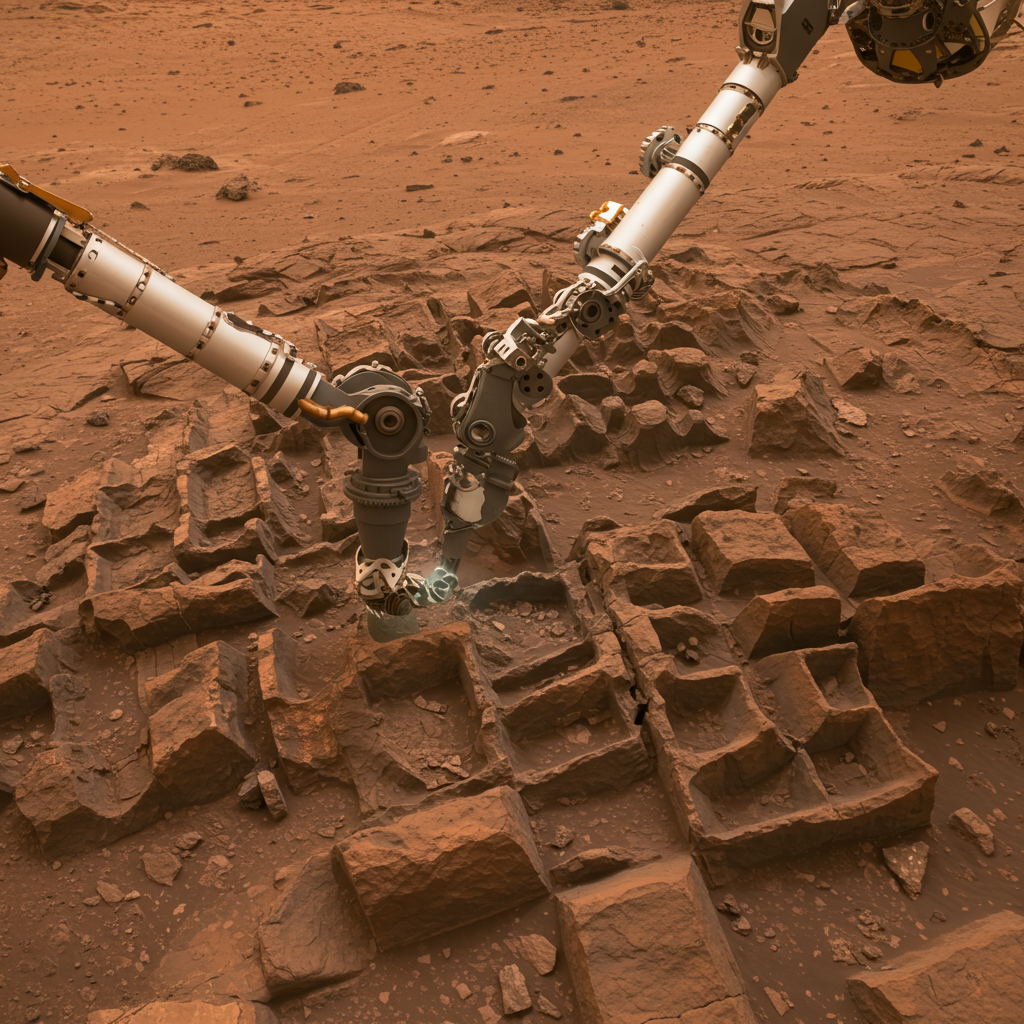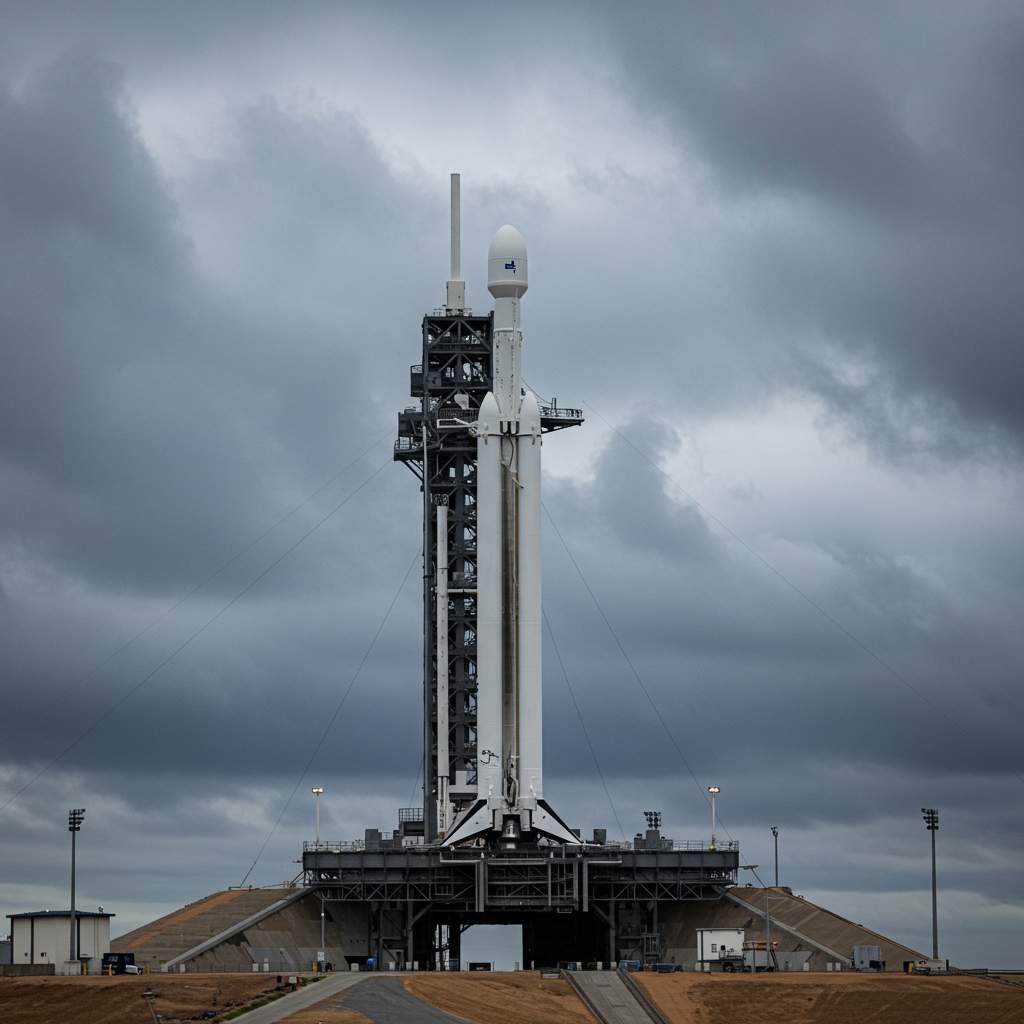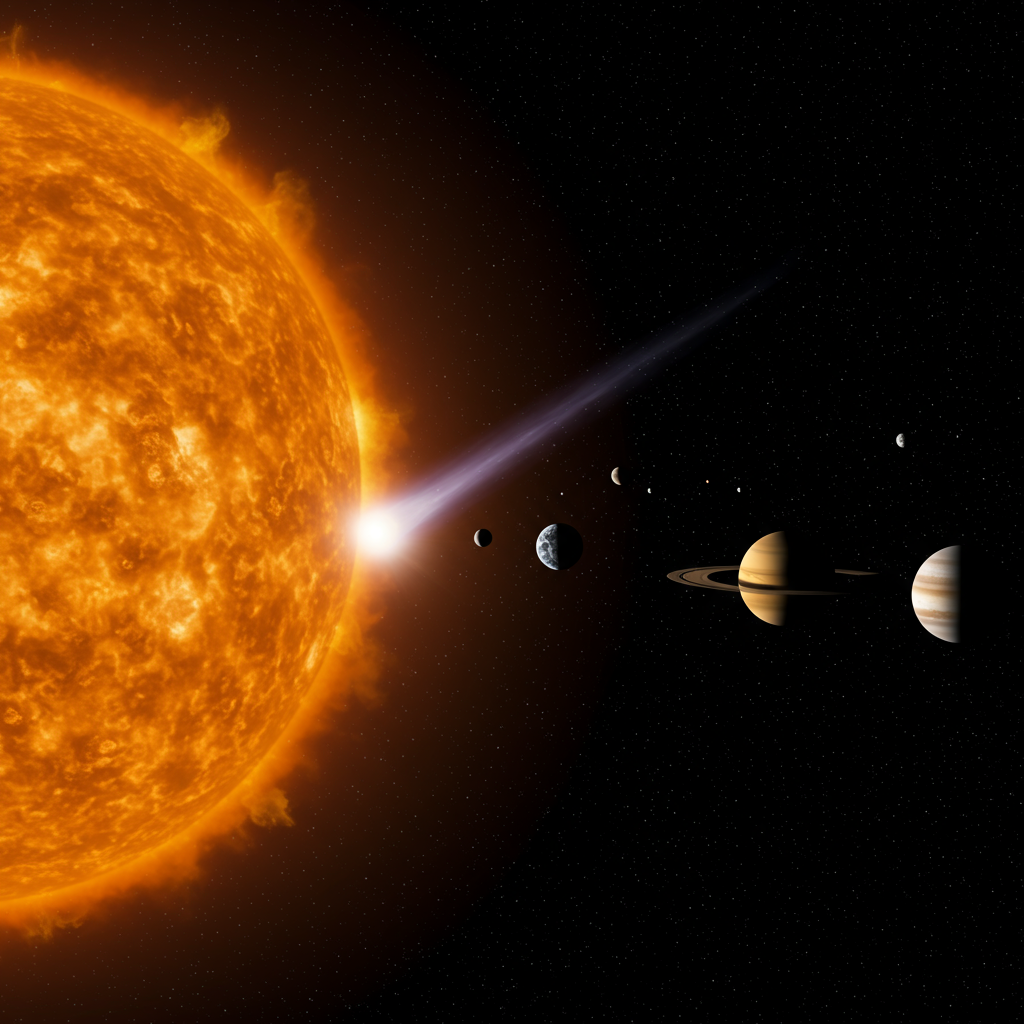Cracking the Code: Curiosity Explores Mars’ Mysterious Boxwork Formations
NASA’s Curiosity Mars rover has begun a detailed investigation into one of the Red Planet’s most intriguing geological puzzles: widespread, unique features known as “boxwork” patterns. These fascinating formations, previously glimpsed only from orbit, are now being studied up close by Curiosity, offering unprecedented insights into Mars’ ancient past and the crucial role played by underground water.
The boxwork consists of distinctive networks of low, crisscrossing ridges. Some stand just a few inches tall, yet they stretch across miles within a specific layer on Mount Sharp, the towering 3-mile (5-kilometer) mountain Curiosity has been climbing since 2014 inside Gale Crater. When viewed from space, these patterns bear a striking resemblance to intricate spiderwebs, a feature that has captivated scientists since before Curiosity even landed in 2012.
How Did the Martian Boxwork Form?
Scientists hypothesize that these resistant ridges are the hardened remnants of ancient groundwater activity. Billions of years ago, water rich in dissolved minerals likely percolated through cracks and fissures within the Martian bedrock. As this groundwater flowed and eventually dissipated, it left behind these minerals, which effectively cemented the cracks, hardening them over time.
Eons of relentless Martian wind acted like a giant sandblaster, eroding away the softer surrounding rock material. This process of differential erosion left the harder, mineral-filled veins standing proud as the interconnected ridges we see today, revealing the intricate boxwork network.
A Unique Layer, A Curious Paradox
Curiosity’s journey up Mount Sharp is essentially a trek through Martian history, with each layer representing a different era of the planet’s changing climate. The rover is currently exploring a layer marked by an abundance of salty minerals like magnesium sulfates. These minerals typically form as water evaporates, strongly suggesting this particular layer was deposited during a period when Mars’ climate was becoming significantly drier.
This is where the mystery deepens. The boxwork patterns, believed to have formed by abundant groundwater activity, are found specifically within this layer associated with a drying climate. “A big mystery is why the ridges were hardened into these big patterns and why only here,” said Ashwin Vasavada, Curiosity’s project scientist at NASA’s Jet Propulsion Laboratory (JPL). This unique location is a key piece of the puzzle scientists are eager to solve.
Unexpected Clues Emerge
Adding to the intrigue, the bedrock between the boxwork ridges reveals a different composition compared to other layers of Mount Sharp. It also contains numerous tiny fractures filled with white veins of calcium sulfate. This is another salty mineral commonly left behind by trickling groundwater. Similar veins were prevalent in lower, older layers of the mountain, particularly those rich in clays, but seemed to vanish in the higher, younger sulfate-rich layers – until now.
“That’s really surprising,” noted Abigail Fraeman, Curiosity’s deputy project scientist at JPL. “These calcium sulfate veins used to be everywhere, but they more or less disappeared as we climbed higher up Mount Sharp. The team is excited to figure out why they’ve returned now.” Their re-emergence here, alongside the boxwork, suggests a complex interplay of groundwater activity even as surface conditions became arid.
Unpacking the Secrets: Drilling and Analysis
To truly understand the unique composition of this region and unlock the secrets of the boxwork’s formation, Curiosity recently performed a crucial task. On June 8, the rover used the drill on its robotic arm to collect a sample from a rock in this area, nicknamed “Altadena.” The pulverized sample was then deposited into the rover’s onboard laboratory instruments for detailed chemical and mineralogical analysis.
The mission plans to drill additional samples from other boxwork areas, including locations with larger, more prominent ridges. Analyzing these samples will help scientists confirm their hypotheses about formation and mineral composition. Crucially, they will also be searching for organic molecules and other signs of an ancient habitable environment potentially preserved within the hardened, mineral-cemented ridges.
As Curiosity navigates this fascinating new landscape, the mission team is also adopting a new naming convention. Previously, features were often named after places in Southern California, near JPL. Now, names are being drawn from around Bolivia’s Salar de Uyuni, Earth’s largest salt flat, and Chile’s Atacama Desert. These extremely dry, Mars-like environments serve as fitting inspirations for the features in this revealing Martian terrain.
Curiosity’s exploration of the boxwork patterns is a vital step in understanding the evolution of Mars’ climate, the persistence of groundwater beneath its surface, and the potential for the Red Planet to have once supported life. The detailed images, like the rover’s first 360-degree panorama of the boxwork area captured using its Mast Camera, and the upcoming sample analyses are providing scientists with unprecedented views and data to finally “unpack” this ancient Martian mystery.




